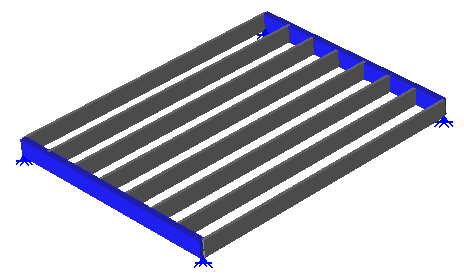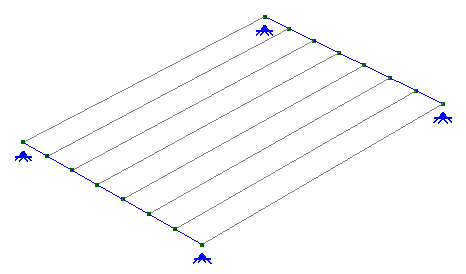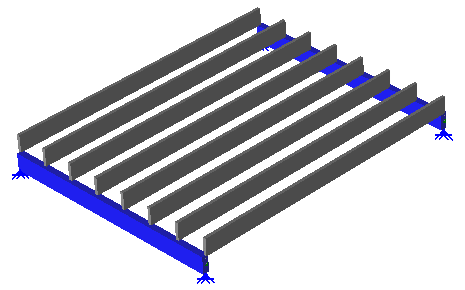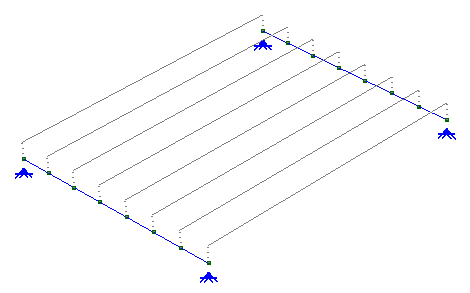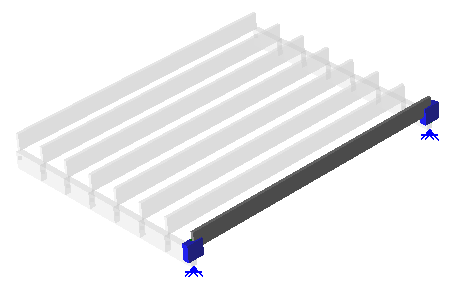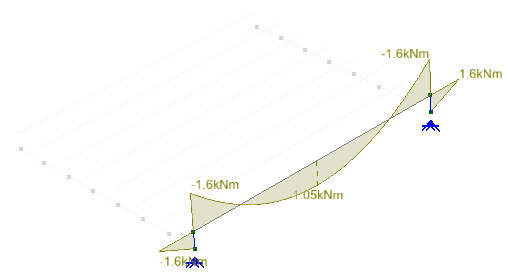Modelling member offsets
The member offset data is shown in the member properties data panel.

The member offset data specifies the end beam position relative to the node. Member offsets can be defined in global axes or in local member axes.
Member offsets are not just cosmetic. They require careful consideration before being used because they also affect the analysis results, sometimes significantly. Offsets are equivalent to rigid elements that connect the ends of a member to its nodes, and these rigid elements can change the forces and moments in the member. This is demonstrated in the examples below:
Modelling to the centreline
The following floor consists of joists connected to bearers. The joists and bearers have all been connected at their centrelines, and the support nodes are fully released for rotation. Therefore, all the beams behave as simply supported beams.
|
|
|
|
Rendered View - Floor modelled to beam centrelines |
Wireframe View - Floor modelled to beam centrelines |
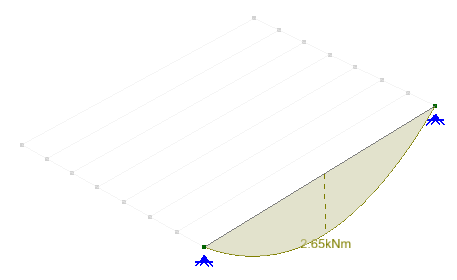
Bending moment diagram for end beam
Modelling with member offsets
Consider the same floor, except now the floor joists appear to be sitting on the bearers. To achieve this, the joists are modelled with member offsets. However, as the offsets are equivalent to modelling short rigid elements, the beams no longer behave as simply supported beams and attract large end moments.
|
|
|
|
Rendered View - Floor modelled with member offsets |
Wireframe View - Floor modelled with member offsets |
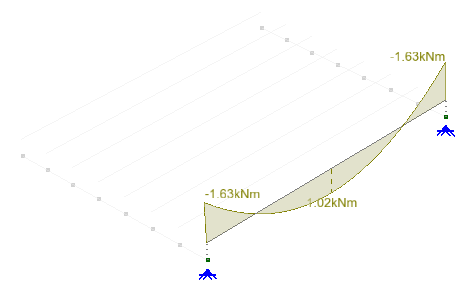
Bending moment diagram for end beam
Comparing results
For these two models, the difference in results is very significant. Comparing the results for the model with offsets to the model without offsets, the maximum mid-span moment and deflection reduced by more than 50% in the model with member offsets.
If we replace the member offsets with short stiff elements, we get results that are very similar to the model with member offsets. This is because they are very similar models, the difference being that when modelled with offsets the short members are effectively rigid elements
|
|
|
See also Member offsets.
See also Member offset text.
See also Align members.
See also Remove member offsets.
